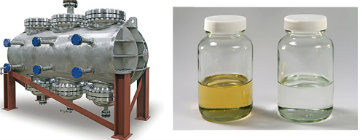Waste Management enters gas-to-liquids joint venture
Several companies organize to produce renewable fuels, chemicals
Oklahoma City, Okla. – Last week, a joint venture was announced that will produce renewable fuels and chemicals
from biogas and natural gas using smaller-scale gas-to-liquids (“GTL”) technology. The companies participating in
this joint venture are:
- Waste Management’s Organic Growth Group – the branch of the company overseeing new
and immerging technologies - NRG Energy (NRG) – a Fortune 500 utility company
- Ventech – a global leader in the design and construction of modular refineries and gas processing
systems - Velocys – an owner of smaller-scale GTL technology
Under this program, WM will contribute its knowhow, as well as a demonstration unit that was developed as part of its
existing GTL program. In addition, the company will supply landfill gas and, in certain cases, offer sites to host a project.
Ventech will construct facilities related to the joint venture, while Velocys will provide its GTL technology.
NRG will provide clean energy development, as well as its natural gas expertise. Using smaller-scale GTL technology, the
joint venture will convert landfill gas, co-fed with natural gas, into renewable fuels and chemicals, like cleaner-burning diesel.
Waste Management pioneered the use of this kind of technology by building and operating a demonstration unit at its East
Oak Landfill, located just outside of Oklahoma City. That facility has since accumulated more than 10,000 hours of
successful operation.
Following the joint venture, the first commercial facility is now under development and will also be located at the East Oak
Landfill. For that project, engineering and design work is substantially complete, final draft permitting documents have been
submitted, and development activities for additional facilities are expected to commence shortly.
“From developing gas recovery and cleanup techniques, to registering GTL diesel as a fuel for on-highway use, Waste
Management has been a leader in this area,” said Joe Vaillancourt, vice president, corporate venturing at Waste Management.
“We are pleased to take this opportunity forward with a very strong team. Velocys’ leading smaller-scale GTL technology,
Ventech’s engineering capabilities, and NRG’s clean energy development expertise will complement our strengths.”
Photo: A: Mock-up of Velocys’ 3-core FT reactor; B: Conventionally produced diesel (left) vs. FT diesel (right) with very low impurities
